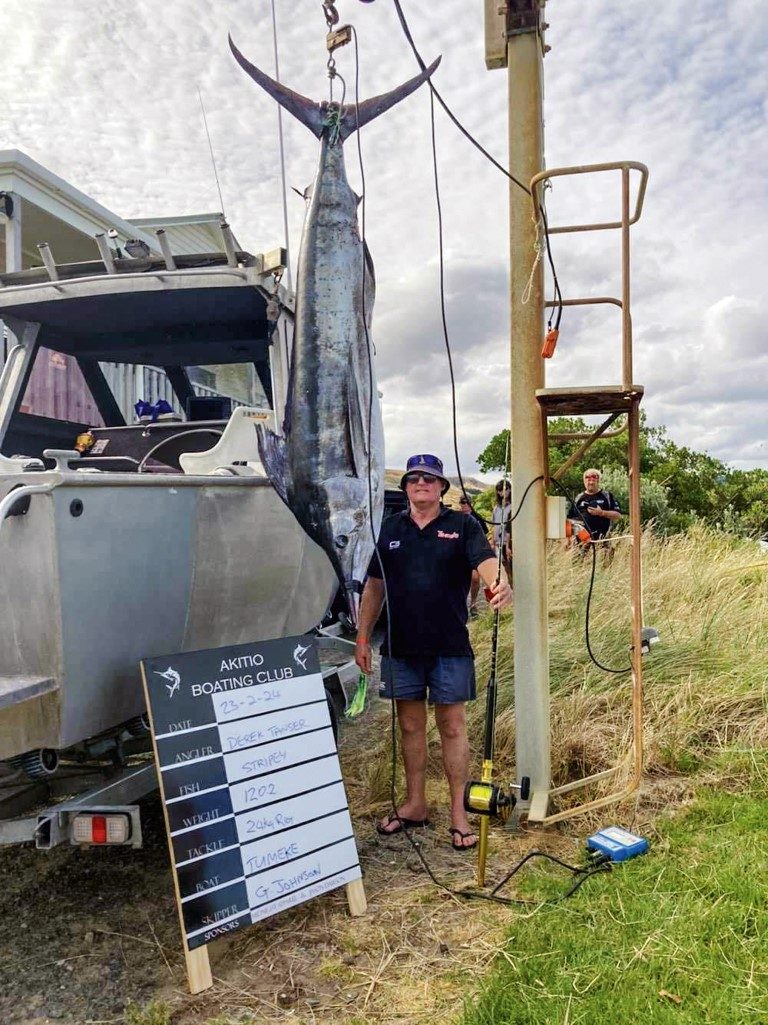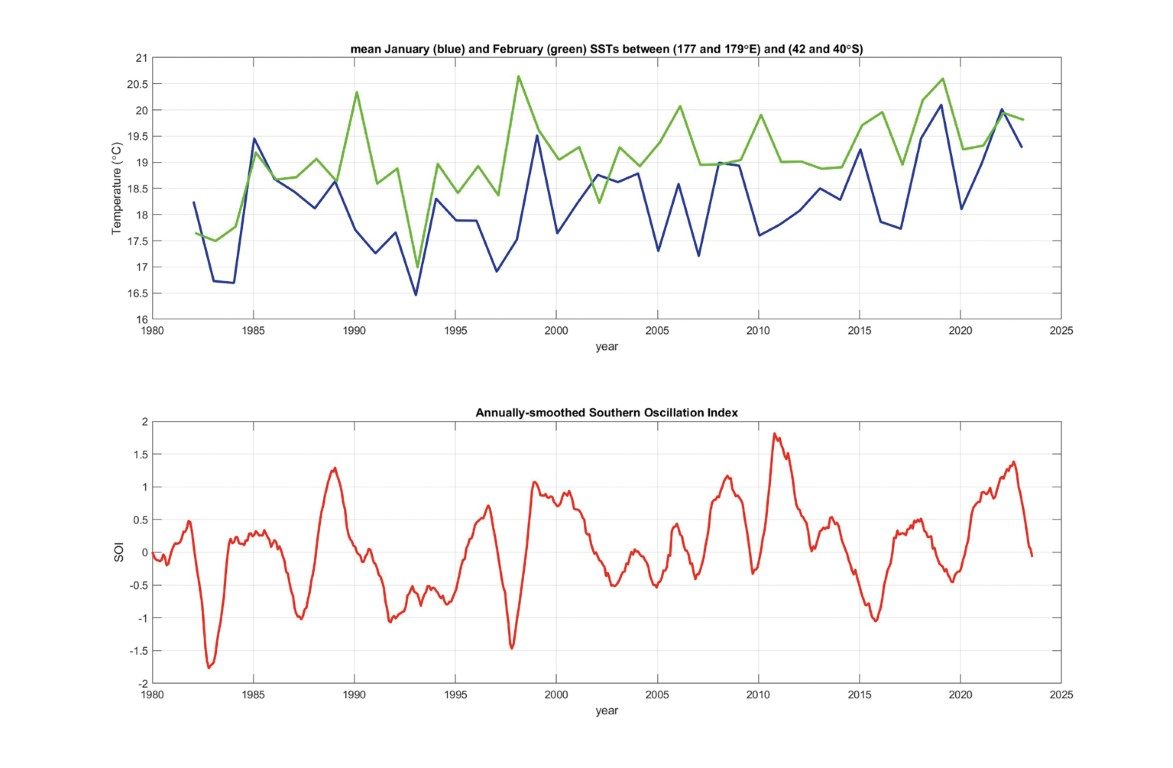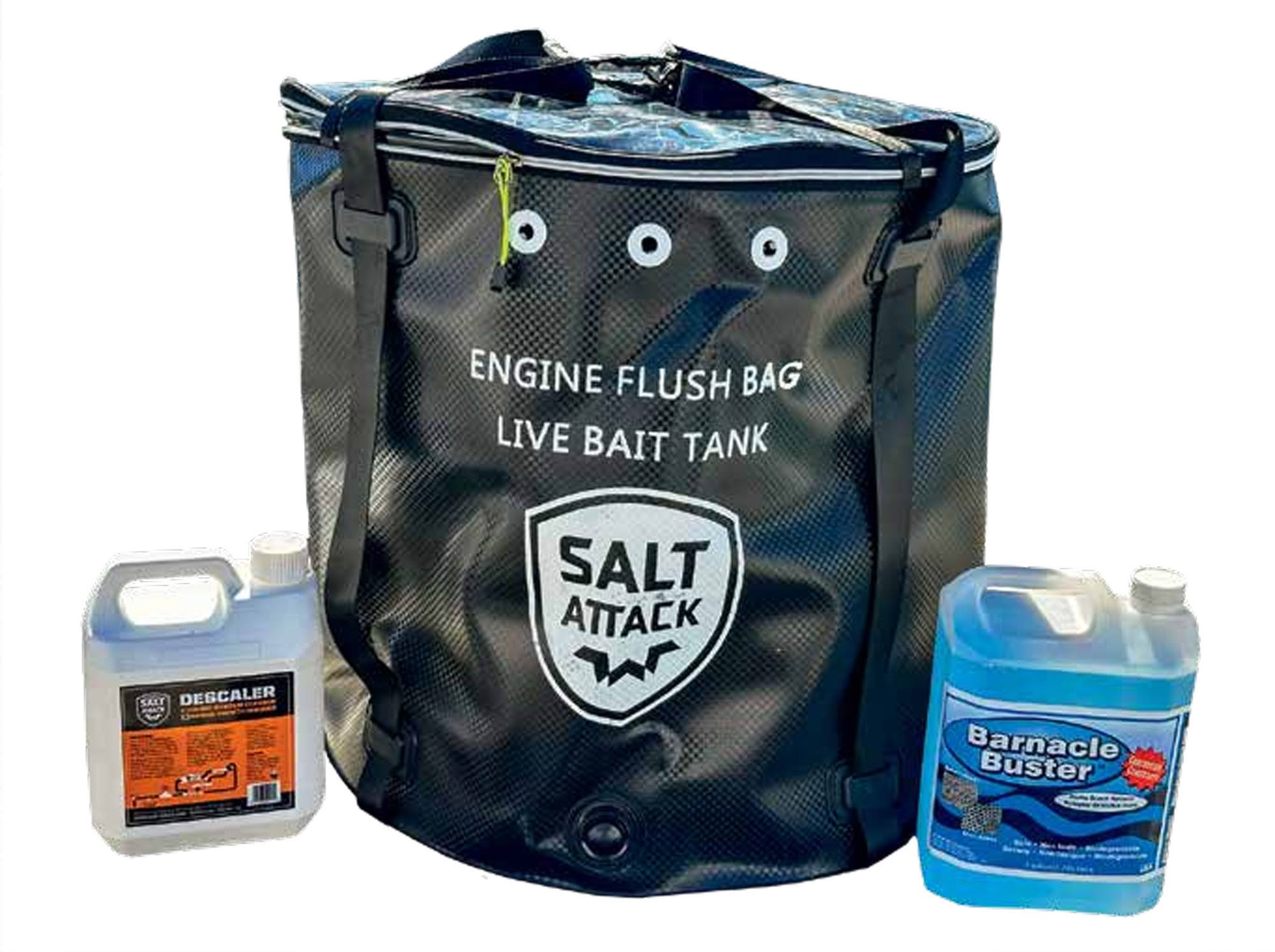

When Mike Meredith and his family set out from Castlepoint in late January for a quiet day’s fishing they did not expect smoked marlin for dinner, writes Kevin Cudby.
A good forecast on January 21 looked like the perfect opportunity to get out on the water while Mike’s mother was visiting from Brisbane. Leaving the beach, Mike’s son Max took the helm while they rigged several small trolling lures, expecting kahawai or perhaps albacore. Just in case, Mike added a big marlin lure on 37kg breaking strain line.
Barely three minutes after leaving the trailer, something attacked the big lure. Shortly after that, a second hit on the big lure got everyone’s blood racing. Then came another hit. This time, the fish hooked up! Six minutes into a quiet fishing trip Mike found himself battling a striped marlin which was jumping all over the ocean, pulling line off a screaming big-game reel, and doing everything a marlin can do to take that lure home.

After a half-hour battle with the family working as a well-coordinated team, they brought the fish on board and took it to the Wairarapa Sports Fishing Club’s weigh station at Castlepoint. This was big news for the Wairarapa. It was the club’s first marlin in 28 years, and only the second recreationally-caught marlin off Castlepoint ever. The first was a striped marlin, landed in 1996.
Meredith has caught marlin before. This one was personally special because the family was involved, and it was the first marlin for Blood Knot, a 6m alloy powerboat he built himself.
With warm blue water close to Castlepoint, Mike’s success pointed to a promising billfish season for the Wairarapa. It looked even better when club member Nick Loader landed a good-sized shortbill spearfish (28.15kg) five days later.
Marlin fishing off Hawkes Bay and the Wairarapa has been outstanding this summer. According to Hawkes Bay Sports Fishing Club Manager Neil Price, club members caught 29 striped marlin and three blue marlin (excluding several marlin landed at the club by non-members) up until the end of February. Most of these fish were tagged and released. That’s more than the Napier-based club’s combined total for all previous fishing seasons.
Ninety-five kilometres south of Napier, the Porangahau Fishing Club has also had a great season. Club contact Scott Kyle said that by early February, Porangahau-based fishers had tagged and released seven striped marlin and landed another. Unfortunately the marlin fishing went quiet in late February. Porangahau Fishing Club’s first-ever marlin were caught last summer, with two blue marlin tagged and released.
Forty kilometres further south, the Akitio Boating Club’s historic first marlin came on February 23, the first day of their three-day ‘Fish Akitio’ competition, when a team from the Hawkes Bay Sports Fishing Club brought in a 120.2kg striped marlin. Graham Johnson and his crew on the 6.1m Scorpion Tumeke had been returning from a successful day’s bottom fishing off Cape Turnagain when they spotted birds working a school of fish. Trolling small lures for albacore, they were astounded when a marlin latched on to Derek Tanser’s gear, with a lure bought for under $10 from Temu on 24kg game-fishing tackle. After battling the fish for an hour and ten minutes, Tanser notched up his first marlin.

This year’s billfish tally from Wairarapa and southern Hawkes Bay is more remarkable because the weather has not been fishing-friendly. Gale conditions at Castlepoint in early February forced the Wairarapa Sports Fishing Club to cancel the first two days of its three-day competition scheduled for February 2–4, and forecast strong winds on the third day discouraged fishers from going ‘out wide’ after game fish. The second day of Fish Akitio was cut short by strong winds, and the third day was cancelled.
Striped marlin are usually thought of as warm water fish. The Wairarapa and Hawkes Bay area has a south-moving current called the East Cape Current which forms the inshore side of a large eddy called the Wairarapa Eddy. The eddy rotates anti-clockwise and is ‘locked’ in position by the North Island and the Chatham Rise. According to NIWA scientist Phil Sutton, the water in the Wairarapa Eddy in January and February this year was about 2o warmer than the average during the late 1980s and early 1990s. This warm-water anomaly is especially noticeable off the Wairarapa Coast, from Cape Turnagain down to Castlepoint.

Average sea surface temperature in this area fluctuates from year to year, and scientists are not able to explain all of the fluctuation. Climate change accounts for a warming trend, but that does not explain why it varies from year to year. The El Niño-Southern Oscillation may be a factor, but according to Dr. Sutton, something else is going on.
The warm water is often a long way offshore, but fishers we spoke to point out that the marlin are coming inshore chasing smaller fish. Sometimes the warm water moves close to the coast. Mike Meredith caught his marlin in 20°C blue water only three miles offshore.
Some marlin have been caught in cooler water. Derek Tanser’s fish was hooked in 96m deep water with a surface temperature of 18.5°C. It wasn’t alone. Derek’s crewmates spotted four other marlin during the fight. Scott Kyle told us many of the fish tagged off Porangahau were also caught in cooler water.

NZSFC consultant John Holdsworth shared data from satellite tags attached to six striped marlin off New Plymouth in February 2023. One of these fish spent most of March near the Chatham Rise before cruising up to the Coral Sea. This fish, like others in the study, spent most of its time in surface water of at least 18°C but the tag data shows that striped marlin will briefly dive into even colder water.
The big question for east coast fishers is whether the marlin will come back next year. The only way to find out is to get out and go fishing.




